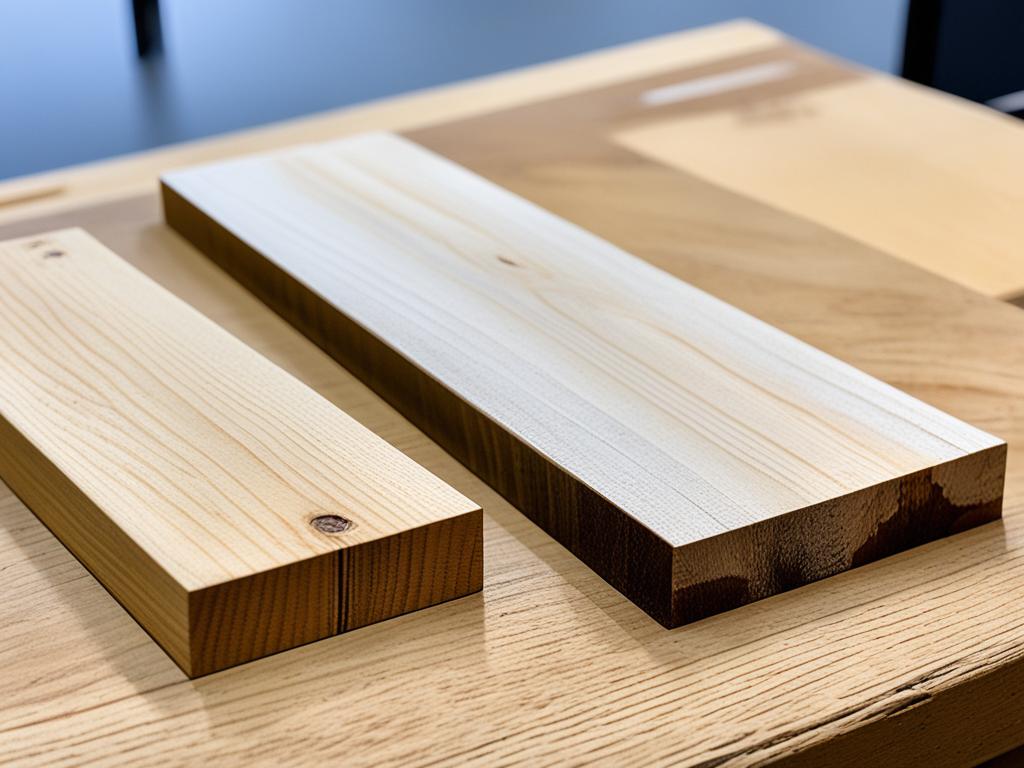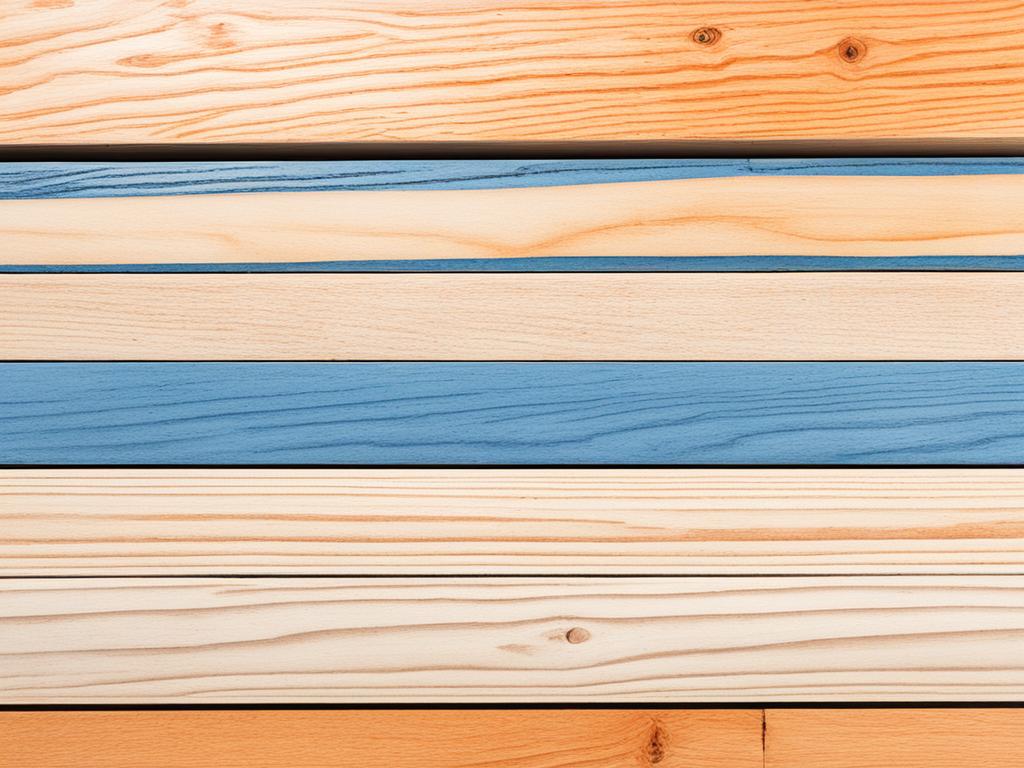When it comes to selecting the right lumber for your construction project, the choice between 2×6 and 2×8 dimensions plays a crucial role. Understanding the differences, strengths, and best uses of each option will help you make an informed decision that aligns with your specific needs and requirements.
Key Takeaways:
- Different sizes of lumber, such as 2×6 and 2×8, offer distinct advantages depending on the construction project.
- Consider the strength and durability of the lumber to ensure it can withstand the intended applications.
- 2×6 lumber is commonly used for walls, joists, and light framing, while 2×8 lumber is suitable for heavy load-bearing structures.
- Choosing the optimal lumber size will ultimately depend on the specific requirements of your project.
- Consult with professionals or builders to determine the best lumber size for your construction needs.
Strength and Durability
When it comes to construction projects, the strength and durability of lumber are non-negotiable. The right choice of lumber can ensure that your structure stands the test of time, withstands external forces, and provides a safe and secure environment.
Both 2×6 and 2×8 lumber options offer significant strength for various applications. However, there are some differences between the two that can impact your decision-making process. Let’s explore further.
Strength Comparison: 2×6 vs 2×8
When comparing the strength between 2×6 and 2×8 lumber, it’s essential to consider the size and dimension. While 2×6 lumber is known for its rigidity and strength, 2×8 lumber offers even greater load-bearing capacity.
The wider width of 2×8 lumber allows it to resist bending and compression more effectively than 2×6 lumber. This makes it an ideal choice for projects that require higher weight-bearing capabilities and increased structural stability.
However, it’s important to note that 2×8 lumber can be overkill for certain applications where the extra strength may not be necessary. It’s crucial to assess the specific requirements of your project to determine the optimal lumber size.

Wood Framing Options
Wood framing is a popular choice for various construction projects, offering numerous benefits, including cost-effectiveness, versatility, and sustainability. When it comes to wood framing, both 2×6 and 2×8 lumber are commonly used options.
The choice between 2×6 and 2×8 depends on the design requirements, building codes, and the desired strength of the structure. While 2×6 lumber may be sufficient for most residential applications, 2×8 lumber is often preferred for more significant projects or areas with greater load demands.
Ultimately, the optimal lumber size and wood framing option will depend on the specific needs of your project. Consulting with an experienced contractor or engineer can help you make an informed decision based on structural requirements, cost considerations, and overall project goals.
| Lumber Dimension | Strength | Best Uses |
|---|---|---|
| 2×6 | Good |
|
| 2×8 | Excellent |
|
Best Uses and Applications
When it comes to choosing the right lumber dimensions, understanding the best uses for 2×6 and 2×8 is essential. Each dimension has its own strengths and can be utilized in various construction projects.
Let’s start with 2×6 lumber. Its smaller size makes it ideal for projects where space is a concern, such as interior wall framing or building small structures like sheds or garages. Additionally, 2×6 lumber is commonly used for decking, fences, and railings, as it provides sufficient strength and stability.
On the other hand, 2×8 lumber offers greater strength and load-bearing capacity, making it suitable for more demanding projects. Its larger size makes it a popular choice for floor joists and beams, especially in larger construction projects like residential homes or commercial buildings. If you’re planning to build a sturdy deck or construct a robust structural support system, 2×8 lumber might be the better option for you.
Ultimately, the choice between 2×6 and 2×8 lumber will depend on the specific requirements of your project. Consider factors such as the weight-bearing capacity, available space, and intended use to make an informed decision. Consulting with a professional or seeking advice from a lumber supplier can also help you determine the optimal lumber size for your construction needs.
FAQ
What is the difference between 2×6 and 2×8 lumber?
Which is stronger, 2×6 or 2×8 lumber?
What are the best uses for 2×6 lumber?
What are the best uses for 2×8 lumber?
Which is the optimal lumber size for my project?
Can I use 2×6 and 2×8 lumber interchangeably?
Source Links
- https://www.ar15.com/forums/General/Having-difficulty-finding-2×6-or-2×8-hardwood-boards/5-2659940/
- https://www.lampertlumber.com/blog/lumber/your-guide-to-the-different-grades-of-lumber/
- https://www.loghomeshoppe.com/blog/post/2×6-and-2×8-wood-log-siding-is-amazing
